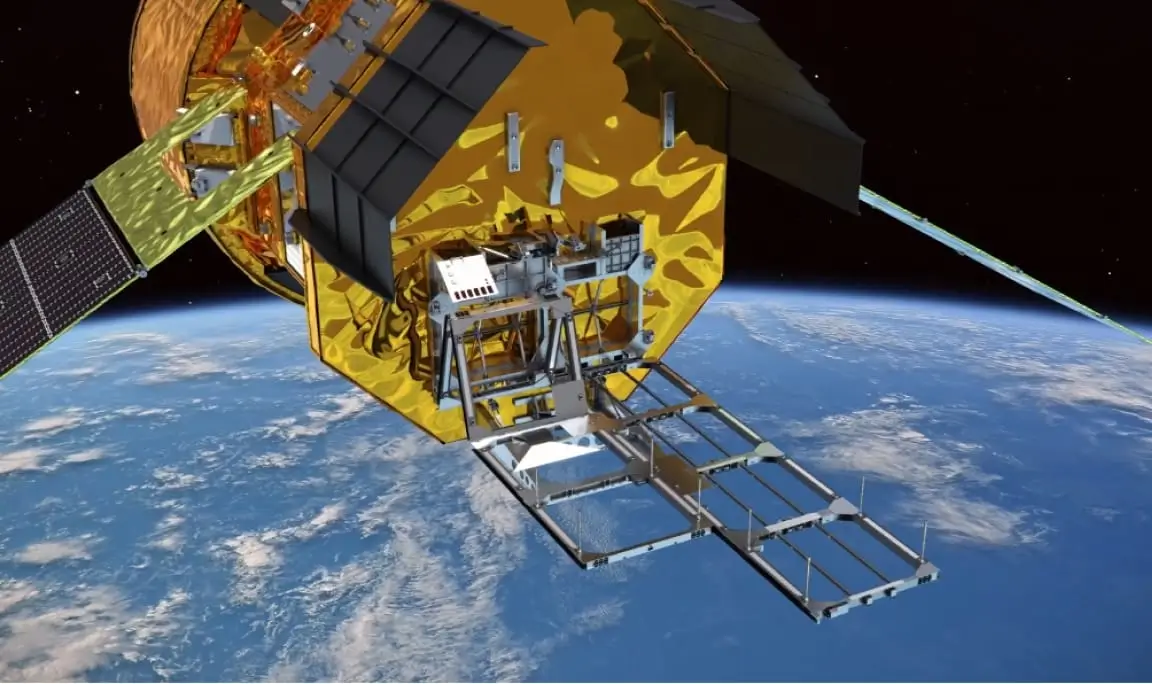Ricoh perovskite solar cells installed on Japan Aerospace Exploration Agency cargo transfer spacecraft1 HTV-X1
Evaluating solar cell performance through in-orbit demonstration
Ricoh Company, Ltd. today announced that its perovskite solar cells have been installed on the Space Solar Cell Demonstration System (SDX) on HTV-X aboard the new unmanned cargo transfer spacecraft1, HTV-X1, developed by the Japan Aerospace Exploration Agency (JAXA), launched on Oct. 26. After HTV-X1 delivers supplies to the International Space Station (ISS), JAXA will conduct an in-orbit demonstration.

During the in-orbit demonstration, Ricoh’s perovskite solar cells are exposed to space for approximately two months. During this period, the current-voltage (I-V) characteristics will be measured, and power generation performance and durability will be evaluated. Conventional satellite solar cells are heavy, which increases launch costs, and they face challenges such as degradation from cosmic rays (radiation traveling through space) and limited power generation under low-light conditions. Perovskite solar cells, by contrast, offer high power generation even at low illumination, strong resistance to cosmic rays, and potential for lightweight and flexible designs. These advantages make perovskite solar cells promising candidates for future use in space.
As part of its commitment to realizing a zero-carbon society, Ricoh has been working on technological development to achieve the practical applications of perovskite solar cells. Since 2017, Ricoh has been participating in joint research with the JAXA Space Exploration Innovation Hub Center for developing perovskite solar cells with high durability suitable for space environments.
Ricoh aims to further improve energy conversion efficiency and durability of perovskite solar cells while achieving high productivity and cost reductions by integrating its core technologies, including organic photoconductors, inkjet heads, ink and supply systems, and roll-to-roll transport, cultivated through its multifunction printer development. Inkjet printing enables precise patterning and stacking of functional layers in designated locations, allowing for design flexibility and customized sizes. Ricoh believes this approach will contribute to broader adoption of solar cells in diverse applications.
Building on the results of this space demonstration, Ricoh will continue to enhance the performance and high durability of perovskite solar cells, accelerating development toward early commercialization.
Related Information
JAXA Space Exploration Innovation Hub Center
Related News
JAXA launch press release
JAXA HTV-X1 Mission (Japanese)
Ricoh perovskite solar cells for space installed on CubSat DENDEN-01 (Japanese)
News & Events
Keep up to date
-
11 Dec
Ricoh Recognised as a Sustainability Leader in Quocirca's 2025 Report
-
06 Nov
Ricoh and Neat announce global partnership to enhance workplace collaboration
-
31 Oct
Ricoh perovskite solar cells installed on Japan Aerospace Exploration Agency cargo transfer spacecraft1 HTV-X1
-
28 Oct
Ricoh Australia Named a Finalist in the ARN Innovation Awards for Sustainability
